Search Results
Steven
I'm the wife, Hannah. My husband is the fighter. I call him Mr. Steven, babe, and sometimes even Esteban. We fight together, of course, but he's the one throwing the punches and kicking cancer's butt.
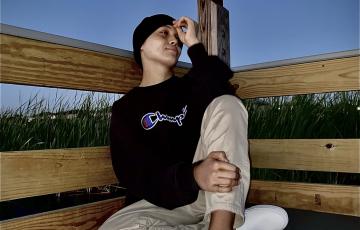
Joshua
Just three days after Christmas, my world was turned upside down. I was admitted to the hospital because I was unable to keep any food down and felt terrible overall. Upon admission, I had a multitude of issues, just a few being extremely high uric acid levels, severe dehydration, pancreatitis, and nephrosis. They also discovered that I had lost 20 lbs.! Later in the hospital, I would lose 20 more.
Joshua
Just three days after Christmas, my world was turned upside down. I was admitted to the hospital because I was unable to keep any food down and felt terrible overall. Upon admission, I had a multitude of issues, just a few being extremely high uric acid levels, severe dehydration, pancreatitis, and nephrosis. They also discovered that I had lost 20 lbs.! Later in the hospital, I would lose 20 more. I remained in excruciating pain for three weeks while multiple branches of the hospital were trying to find out what was wrong with me.
Michael
I’m a 12-year survivor of acute myeloid leukemia (AML). I was diagnosed on Sunday, October 4, 2009.
My oncologist was Dr. Ian Flinn. The first 24 hours following my diagnosis were very harrowing. I was ground transported from Murfreesboro to Sarah Cannon Cancer Center in Nashville where they had a gurney awaiting me curbside. A nurse by the name of Regina stayed with me for almost the entire duration of my first eight hours.

Teresa
I was diagnosed in 2009 with chronic lymphocytic leukemia (CLL). Upon diagnosis, perhaps the greatest shock was becoming aware that I knew so little about cancer, so little about the medical system, and how one needs to go about a process of self-education regarding their disease.
My diagnosis occurred at the Simon Cancer Center, a part of the Indiana University Health System. I was fortunate to have a neighbor who is a nurse practitioner at this cancer center. She intervened when she found out that a routine shoulder MRI revealed multiple enlarged lymph nodes.

Lila
It’s January 11th, 2017, well past midnight, probably around 3 am. I am on the side of a mountain in Africa, 1000 miles away from home, in pitch black out, -20º with the winds, and I can barely feel my fingers. All I can see is the headlamp spot of light shining on the trail.
I think to myself, “Well, Lila, maybe this was not your best idea!” I look up and call my teammate in front of me, my best friend Dawn, and say, “Dawn, I am sorry I talked you into this.” She just looks at me, gives a knowing smile, then turns back to the path in front of us!
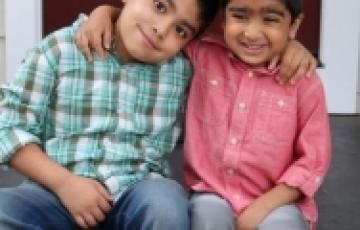
Kabir
Kabir is an eight-year-old boy who is very affectionate, loving, and sweet. He has endless interests and loves dogs, superheroes, ponies, mermaids, magic shows, zoos, roller coasters, rock collecting, traveling, eating at "fancy" restaurants, watching television and movies, building Legos, and playing video games. Before his diagnosis, Kabir also enjoyed swimming and Brazilian Jiu Jitsu. He is caring by nature and an amazing older brother to his younger sibling, Ayaan.
Getting a Second Opinion
Leukemia, lymphoma, myeloma and myelodysplastic syndromes are each different types of cancers. What's more, each disease has subtypes. This means that the signs of the disease, how it's diagnosed and treated and the expected outcomes vary. That's why it's essential to have the right diagnosis before you begin or continue with treatment.
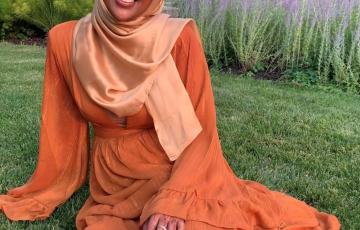
Munira
I will never underestimate my parents' sacrifices to provide my siblings and me with the millions of opportunities we have due to their hard work. My parents were born and raised in Addis Ababa, Ethiopia. Both were born to families who instilled the traditional family value of grit in every walk of life. My parents both obtained a high school diploma with the intent of seeking higher education, but the obstacles of living in a developing country robbed them of the chance.

Kennetha
I found out about The Leukemia & Lymphoma Society (LLS) through a peer at Brockport College where I attend the Healthcare Administration BSN program. My peer had many great things to say about LLS and was excited to be a volunteer intern. I'm grateful that I was given the opportunity to reach out to those who experience the life-changing event of having blood cancer and can provide them with the resources and support that LLS offers. I love volunteering for LLS because it helps me fulfill my passion for caring for others and making a difference in people's lives.

Lori
Just a month before turning 60, I was diagnosed with follicular lymphoma (FL). I really had no symptoms. I had just finished a year of pretty much full-time, long-term substitute jobs at our local middle school. I’m a retired high school English teacher. I had also traveled with my family to both Williamsburg, Virginia and Las Vegas with my sister and her husband. We were only home for four days when I flew my daughter and two-year-old grandson here to Alabama for a week.

Morgyn
June 18th, 2021. A day that I would never expect to happen never in a million years. I was 17 years old living my life like any other teenage girl would. Let me rewind back a few months to February 14th, 2021, yes Valentine’s Day. I was so sick that morning and with COVID-19 still running at its highest I decided to test myself. The test came back positive. I was so sick, the sickest I had ever been and as my quarantine was coming to an end I still felt as if I was still so sick with COVID.

Kent
When Noah was born in 2005, we were surprised when the doctor told us he had Down syndrome. Soon after, we were informed about all of the things that Noah wouldn’t or couldn’t do in his lifetime. We were also given a laundry list of medical problems that he could potentially have. Two months after he was born, Noah went into heart failure and had open heart surgery to correct four holes in his heart. This was a tough time but boy did we have more to come and didn’t know it. He has since had multiple surgeries, tests, studies, etc. We were told that Noa
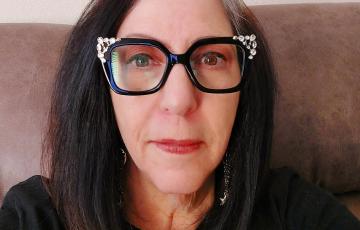
Annette
I had been feeling unwell for quite a while. I would come home from work and go to bed right after dinner. I would sleep for hours and still be fatigued. When we had afternoon meetings, I would fall asleep. My husband and I kept thinking it was my very stressful job. I was on airplanes three times a week and would be traveling all over the country. I wasn’t eating or sleeping well. I finally decided to take early retirement. I still did not feel well even after being retired. I finally got to the point where I was so sick, I told my husband to take me to the emergency room.
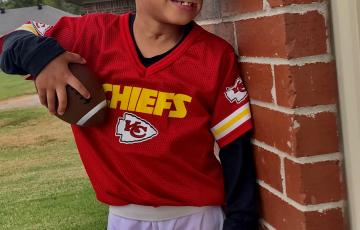
AJ
On December 23, 2018, our lives changed forever. And sadly, it was just the beginning.
I was assigned to work a night shift an hour away from where I dropped my son, AJ, off at my sister’s. I got a call from her two hours later. She said AJ was not feeling or looking well. My sister, Kyesha, took him to the emergency room.
I rushed out, put my emergency lights on, and drove an hour to the hospital. When I got there and saw my son, I didn’t know what to think or say. Tears started rolling down my face. AJ looked almost dead; his color was so blue.
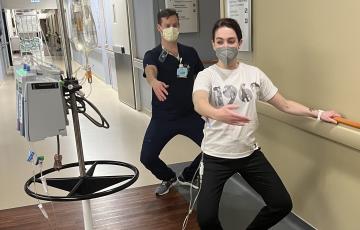
Kaitlin
I moved to Chicago in May 2022. I had recently finished my joint PhD in Social Work and Psychology from the University of Michigan and was offered a job as a People Analytics Researcher at Google. I loved the city and enjoyed frequent runs and cycling rides along Lake Shore Drive. In mid-July, I started noticing some symptoms that concerned me ― difficulty breathing when I was exercising, intense chest and back pain, spider veins on my chest, puffiness in my face, and fatigue.
The Affordable Care Act (ACA)
The Affordable Care Act’s Patient ProtectionsThe Affordable Care Act requires health insurance plans sold through www.healthcare.gov and its state-based marketplaces to comply with a number of requirements. Many of these – including the ones described below – are meant to ensure that patients have access to meaningful health insurance coverage. It’s important to be aware that some health plans, available today through non-governmental sites, may not include these patient protections.
Stem Cell Transplantation with High-Dose Chemotherapy
High-dose chemotherapy and stem cell transplantation are important parts of treatment plans for eligible, recently diagnosed myeloma patients.

Emmanuel "Manny"
Our son Emmanuel “Manny,” though born with special needs (Down syndrome), was and is your typical little boy. However, up until the time he turned 18 months old, we had no idea just how “special” he was. See, on July 28th, 2011, Manny was diagnosed with acute myeloid leukemia (AML), a blood cancer. This news shook our family to its core and would undoubtedly be our greatest test and blessing at the same time. How so? Allow us to share Manny’s amazing journey of strength as he battled the deadly AML.

Timothy
I am an awardee of The Leukemia & Lymphoma Society’s (LLS) Scholarship for Blood Cancer Survivors. I currently hold an associate’s degree in science and am pursuing my bachelor's degree in biology at California State University, San Bernardino, (CSUSB). I am very grateful to be granted this scholarship to help pay for my tuition. In fact, this is the first scholarship I have ever been awarded during my education. These funds are a big stress reliever as it has provided me with the ability to avoid taking out a loan for school and given me peace of mind.

Grace
I’m 15 years old, and I’m a ballerina, Junior Zoo Keeper at Cheyenne Mountain Zoo, actress, singer, and I am a childhood leukemia survivor.
When I was five years old, my parents noticed that I was getting a lot more bruises and nose bleeds than usual (even living in New Mexico at the time). My abdomen was really swollen and I was taking frequent naps, which was also alarming to my parents. They took me to an urgent care location near my house where the doctors said that I was fine.
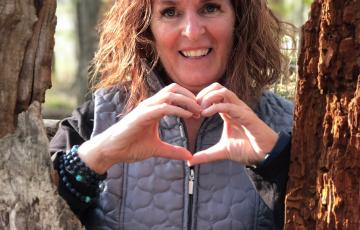
Sue
My story begins with a routine yearly mammogram in April of 2020. I am currently a 25-year breast cancer survivor. So, regular mammograms are just a part of my yearly routine, a simple procedure that I endure yearly with no big issues to speak of ― until now. During the mammogram, they noticed enlarged lymph nodes. My doctor thought it was no big deal, and we would watch them for two weeks and then do another mammogram. I wasn’t worried. She explained that I could be fighting an infection or that I just had large lymph nodes as a normal thing.

Maggie
When I was 8 years old, I was diagnosed with T-cell acute lymphoblastic leukemia (T-ALL). I shocked the doctors with how I was still alive because I had a mass the size of a grapefruit on my lungs and masses all over my other vital organs. When I was admitted to the hospital, they got chemo going everywhere they possibly could ― in my port, my arm, my foot. I was then put into a medically induced coma for about two weeks before waking up. After a while in the ICU, I was sent down to the main floor for hematology/oncology.
Treatment
It's important that your doctor is experienced in treating patients with acute leukemia or has access to an acute lymphoblastic leukemia (ALL) specialist.
Types of ALL TreatmentDoctors use several types of approaches and treatment combinations for ALL: